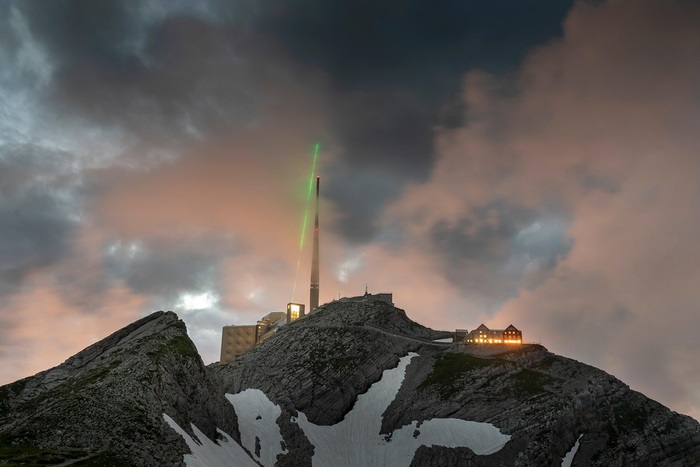A powerful laser pointed at the sky can act as a lightning rod. This is demonstrated by an experiment
conducted in the Swiss Alps, the first successfully carried out in field conditions outside the controlled
environment of the laboratories. The result, which could pave the way for more efficient methods for
protecting critical infrastructure such as power plants, airports and space launch pads, is published in
the journal Nature Photonics by researchers from the Laser Lightning Rod project led by Jean-Pierre
Wolf of the University of Geneva.
To date, the most common lightning protection device is the Franklin rod, a metal pole that intercepts
atmospheric electrical discharges and guides them safely to the ground. For years it has been
hypothesized that a laser beam directed to the sky could represent a valid alternative, since its intense
beam of light can ionize the air (i.e. induce oxygen and nitrogen in the atmosphere to release free-
moving electrons) and create channels with high electrical conductivity that function as fast lanes for
lightning.
To prove this hypothesis, the researchers conducted a series of experiments on Mount Säntis in
northeastern Switzerland, where is located a 123-meter-high telecommunications tower that is struck by
an average of 100 lightning strikes per year. In the summer of 2021, they installed near the tower a
laser the size of a large car, capable of emitting up to a thousand ultrashort pulses per second. Put in
action for more than six hours during thunderstorms, the laser managed to deflect four lightning bolts,
as demonstrated by the high-frequency electromagnetic waves they generated. One of the deflected
lightning strikes was even captured on July 24, 2021 by high-speed cameras: images show that the
electric discharge followed the path of the laser for more than 50 meters.








Caricamento commenti
Commenta la notizia